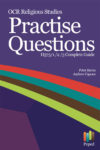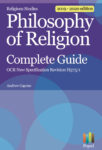Abortion trends
February 27, 2013
Recent trends in Abortion and IVF treatments
Recent trends in both abortion and IVF treatments indicate important changes in social attitudes – and also show how moral facts impact on ethical issues. In this first of two blogs, I consider the statistical trends revealed by a recent Government report.
The proportion of women conceiving outside marriage has risen steadily over the past two decades, to 57% of the total. One third of all conceptions will end in abortion (whereas for married couples it’s only 10%). One of the most significant social changes, however, has been the number of women over 40 having children (up from 12,000 in 1991 to 28,000 last year). There are two significant reasons for this: the availability of IVF treatments and the change in the economic status of women – who tend now to delay childbirth much later than twenty years ago. Overall abortions have risen by 8% in ten years to nearly 208,000 in 2011 for the whole of Great Britain (190,000 in England and Wales, but are down from a peak in 2007).
decades, to 57% of the total. One third of all conceptions will end in abortion (whereas for married couples it’s only 10%). One of the most significant social changes, however, has been the number of women over 40 having children (up from 12,000 in 1991 to 28,000 last year). There are two significant reasons for this: the availability of IVF treatments and the change in the economic status of women – who tend now to delay childbirth much later than twenty years ago. Overall abortions have risen by 8% in ten years to nearly 208,000 in 2011 for the whole of Great Britain (190,000 in England and Wales, but are down from a peak in 2007).
Twenty years ago, 42% of conceptions of women over 40 ended in abortion, whereas last year the proportion was down to 25%. In contrast, abortions for the under 30s has been rising steadily. For example, 29% of pregnancies in the age group 20-24 ended in abortion (2011) compared with 27% in 2001.
Under 18 abortions have also fallen, as with the over 40s, by 15% between 2001 and 2011. Half of all teenage pregnancies are aborted. The major reason is the decline in teenage pregnancies by 10% in ten years (to 31,000 in 2011). Professor David Paton argues that the reason for this fall in pregnancies is not the amount of sex education teenagers receive, nor the contraception available, but simply because "more girls want to stay on at school".
Read more – click below.
36% of women have multiple abortions. This may be a persistent minority who don’t take contraception for whatever reason (on health grounds or on grounds of belief or due to carelessness). For those concerned about the ethics of late abortions, it may be reassuring to know that feticide, the technical term for killing a late-term foetus before removing from the womb, is on the decrease, and only a tiny proportion (less than 1%) of abortions are after 22 weeks. Indeed, the trend is for abortions under 10 weeks – 78% of the total are now early abortions compared with 58% in 2001. 91% of abortions are before the age of quickening, at 13 weeks, which in former times was associated with personhood as the soul was believed to enter the body as the foetus stirred. In some Islamic socieies, 100 days or 14 weeks still constitutes the age when personhood status is given to the foetus.
Most abortions (96%) are funded by the NHS, although most of them (61%) are subcontracted to the private sector. So abortions cost the UK taxpayer around £120m a year (see table of costs below, which vary from around £600 to over £1,000 for late term abortions).
Finally, the vast majority of abortions (98%) are category C (as defined by the 1967 Act). Two doctors establish that “the continuance of the pregnancy would involve risk, greater than if the pregnancy were terminated, of injury to the physical or mental health of the pregnant woman”. News however that in some clinics doctors were pre-signing forms for category C abortions doesn’t encourage us to think that the criteria of “a women’s mental health” is being rigorously applied. The debate continues concerning the psychological and spiritual dimensions of abortion.
Image: Blue woman Pablo Picasso © the author 2013
Read the Government report https://www.wp.dh.gov.uk/transparency/files/2012/05/Commentary1.pdf
For abortion fees go to:
http://www.mariestopes.org.uk/Fees/Womens_services/Abortion.aspx






0 Comments